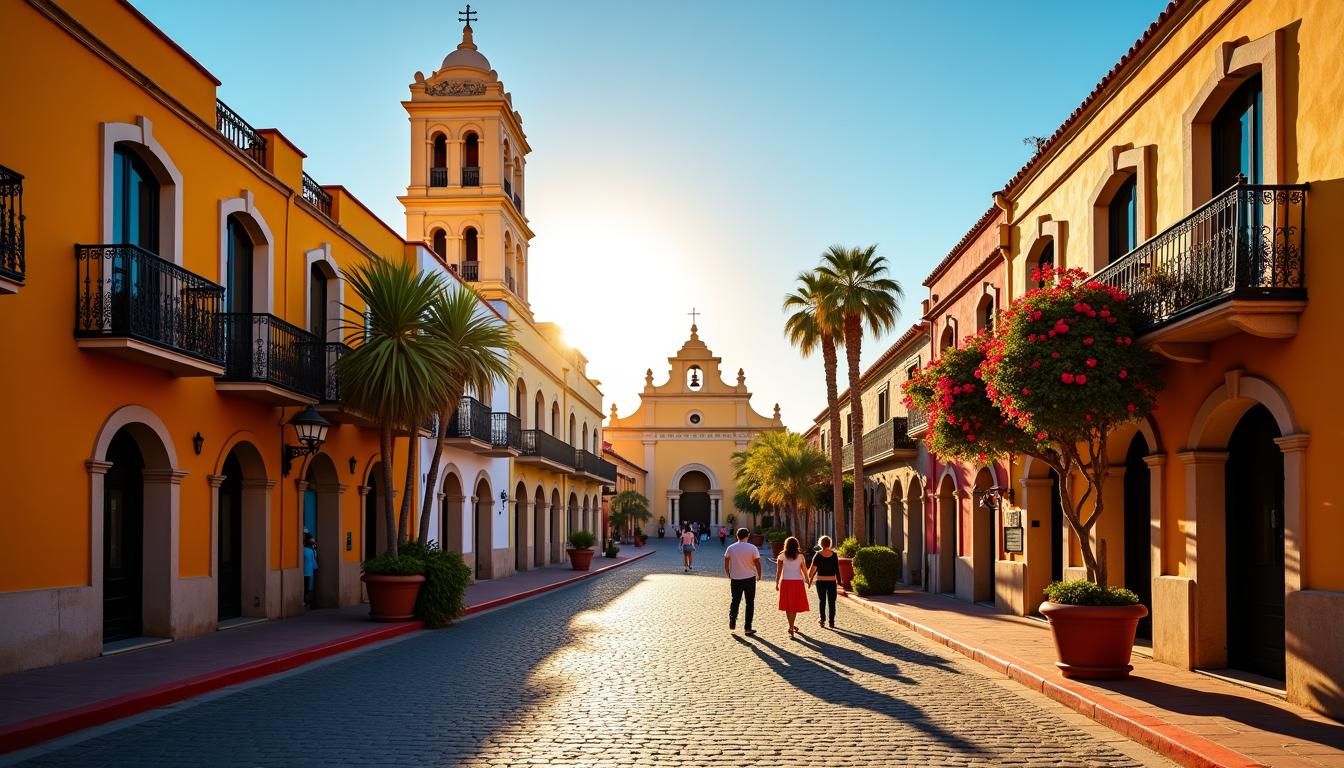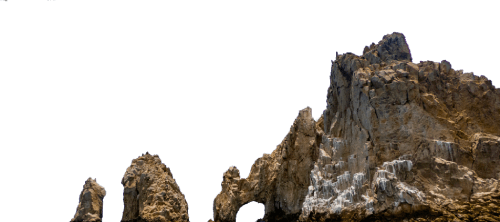
Cabo San Lucas and its neighboring towns are often celebrated for their beaches and nightlife, but beneath the surface lies a rich colonial heritage waiting to be discovered. At Mucho Cabo, we’re passionate about uncovering the layers of history that make this region so captivating. In this guide, we’ll take you on a one-day journey through Cabo’s colonial architecture, blending history, culture, and local charm.
Start your day in Cabo San Lucas at the Parroquia San Lucas Evangelista, a humble yet historically significant church built in 1730 by Spanish missionaries. Located just blocks from the town square, its stucco walls and unadorned facade reflect the simplicity of early colonial design. Today, it remains an active parish, offering bilingual Masses on Sundays at noon. Arrive early to admire its serene courtyard and chat with friendly parishioners about the church’s role in local life.
A short walk away, you’ll find the Casa de la Cultura, a striking pink-hued building dating to the mid-19th century. Originally housing Americans during the Mexican-American War, it now serves as a cultural center. Explore its museum exhibits showcasing pre-colonial artifacts, colonial-era tools, and rotating art displays. Don’t miss the on-site theater, which hosts live performances and workshops celebrating Baja California’s traditions.
Pro Tip: Grab a coffee and pan dulce from a nearby bakery to enjoy in the shaded plaza outside the Casa de la Cultura.
Drive 30 minutes east to San José del Cabo, where the Mission San José del Cabo Añuití awaits. Founded in 1730 by Jesuit missionary Nicolás Tamaral, this mission endured relocations and reconstructions due to floods and rebellions. The current structure, rebuilt in 1940, features a striking tile mural above its entrance depicting Tamaral’s martyrdom during the Pericú uprising. Step inside to see its vaulted ceilings and rustic altar, which echo the Spanish colonial style.
From the mission, wander into San José del Cabo’s historic district:
- Plaza Mijares: The town’s central square, framed by colonial-era buildings and shaded by towering palms. By day, it’s a peaceful spot to people-watch; by evening, it comes alive with mariachi bands and folkloric dances.
- Art District: Stroll cobblestone streets lined with 19th-century adobe homes converted into galleries and boutiques. Peek into Galería Corsica or Iris Gallery to see contemporary works displayed alongside traditional architecture.
- Calle Álvaro Obregón: This pedestrian-friendly street is flanked by restored colonial buildings housing cafes and craft shops. Stop at La Dolce for artisanal gelato or Tequila’s Boutique for handcrafted souvenirs.
For a panoramic finale, head to El Faro Viejo, a ruined lighthouse built in 1890. Perched 500 feet above sea level, it offers sweeping views of the Pacific and the desert landscape. While the structure itself is in disrepair, the hike (or ATV ride) to reach it adds an adventurous twist to your historical tour.
End your day at La Panga Antigua, a restaurant housed in a restored 19th-century building in San José del Cabo. Savor regional dishes like mole poblano or fresh seafood tacos beneath exposed wooden beams and vintage photographs that nod to the building’s past.
Cabo’s colonial architecture isn’t just about aesthetics—it’s a gateway to understanding the region’s layered history. From missionary efforts and indigenous resistance to maritime trade and cultural fusion, these buildings tell stories of resilience and transformation. At Mucho Cabo, we believe that exploring these sites deepens your connection to the soul of Baja California, revealing a side of Cabo that’s often overlooked.
Whether you’re a history buff or a curious traveler, Cabo’s colonial architecture offers a captivating counterpoint to its modern allure. Let Mucho Cabo be your guide to uncovering the stories etched into these timeless walls.
